What to Look for When Buying a Used Ford F-150
The Ford F-150 is more than just a full-size, light-duty pickup truck; it’s actually an automotive sales phenomenon. If it’s not remarkable enough for you that the F-150 has been America’s best-selling truck for more than 40 years, how about the fact it’s been America’s biggest-selling vehicle of any type since as long ago now as 1981? Those would be remarkable achievements for any vehicle even in a tiny market, but in one as huge as the US those facts are almost unbelievable.

Naturally, with new F-150 models selling in such incredible numbers there’s an even bigger used market out there, so here’s what to look out for when you’re long to buy a used Ford F-150. And if you want to get your hands on a used F-150 for a bargain price, check out government auctions.
How long has the Ford F-150 been in production?
The Ford F-150 as we know it today has been in production since 1975, but the first Ford F-Series truck actually arrived as long ago as 1948. The F-150 is effectively the modern equivalent of those first Ford pickup trucks of the late 1940s, but in 1999 the F-Series was expanded to include the heavier-duty Super Duty models.
How many generations of the Ford F-150 are there?
There have been fourteen different generations of the Ford F-150 since it was first introduced, with the latest generation arriving for the 2021 model year. The F-150 itself arrived as part of the F-Series sixth generation in 1975, so that’s where I’m going to start with telling you about what to look for with a used Ford F-150.
Unlike some trucks, and despite the incredible popularity and prevalence of the F-150, buying a really old one doesn’t always mean you’ll be buying a cheap one. A lot of older F-150 models are very collectible and they’re highly sought-after by those looking to restore them or use them as restomod platforms.
Ford F-150 history
The first generation of the Ford pickup that used the F-150 name was actually the sixth generation of the Ford F-Series that arrived in 1973, although the F-150 itself wasn’t actually a thing until 1975.
Sixth-generation (1973-1979)

F-150 was introduced and slotted into the F-Series lineup between the F-100 and the F-250 to avoid certain emission control restrictions that had been brought in at the time. This was also the first time Ford introduced a SuperCab body style into its truck family and we all know how successful that turned out to be.
Seventh-generation (1980-1986)
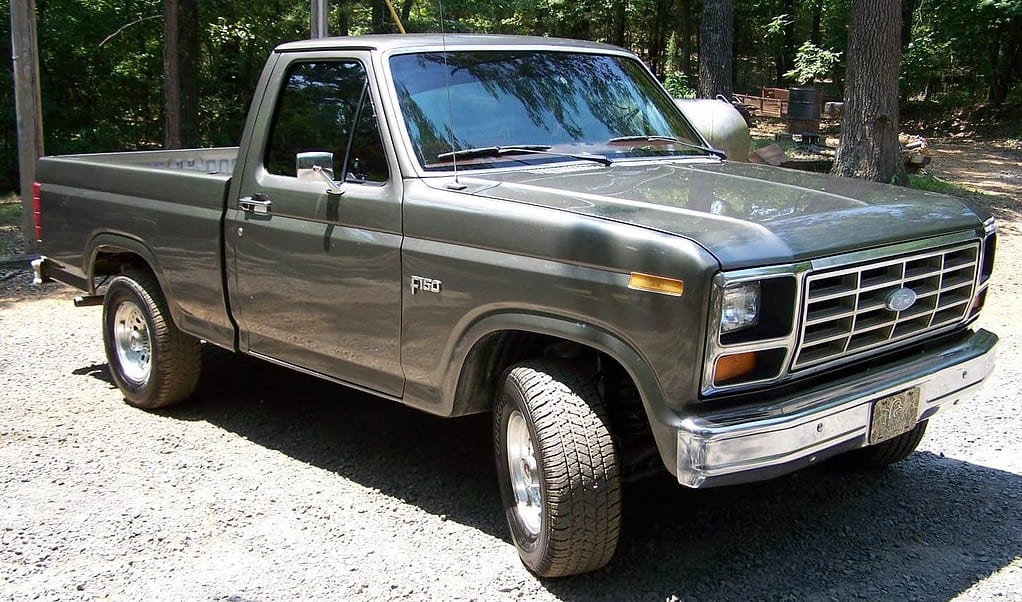
Fuel efficiency came into even stronger focus when the seventh generation arrived in 1980, but it wasn’t all bad news as advances in technology also produced more powerful engines that made the F-150 even more capable when it came to towing and hauling duties.
Eighth-generation (1987-1991)
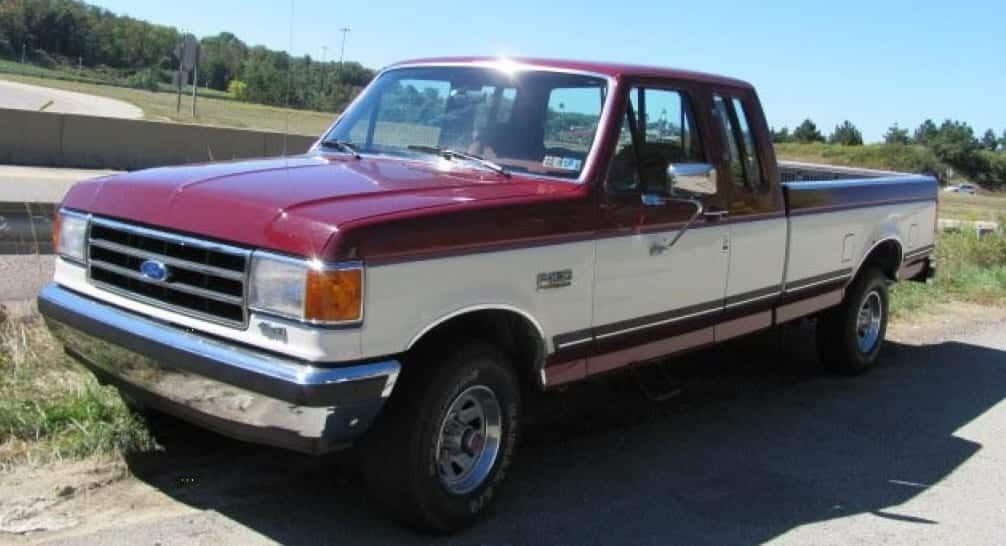
Exterior changes were minor with the eighth generation, but there was a complete overhaul of the interior that brought in a completely new look and feel that perhaps started to expand the truck’s appeal beyond the workplace and into the retail environment. Electronic fuel injection was also introduced to this generation of the Ford F-150 to once again improve power ratings as well as efficiency.
Ninth-generation (1992-1997)
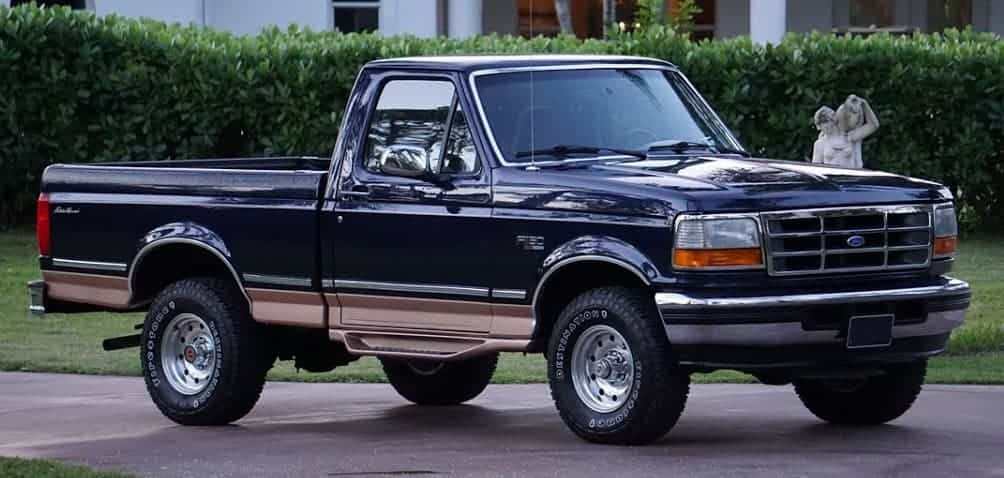
If you’re looking for a retro F-150 as a project to work on that won’t cost you a fortune to buy then a ninth-generation F-150 might be worth checking out. The exterior got a significant upgrade with this generation and it’s probably where the F-150 really began to resemble the truck we know it as today.
Tenth-generation (1997-2003)
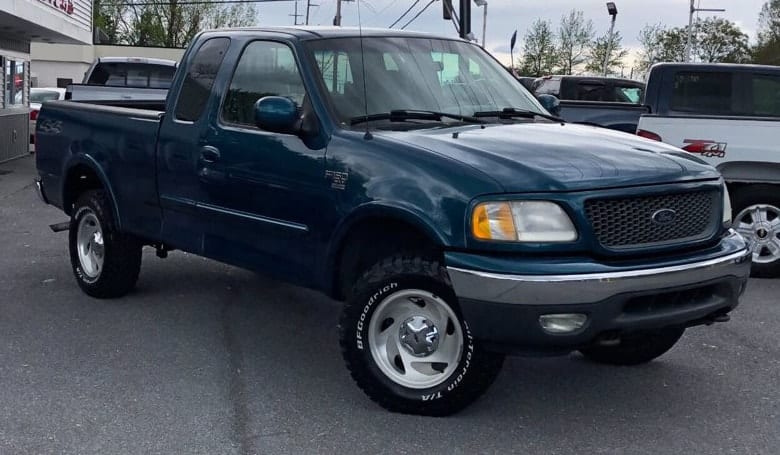
The tenth generation is where the F-Series was split into the F-150 that was increasingly being bought for personal use and the Super Duty F-250 and F-350 variants aimed at more commercial applications. Another first came about for the F-150 in 2001 when it became the first pickup truck in its class to feature four full-size doors.
Eleventh-generation (2004-2008)
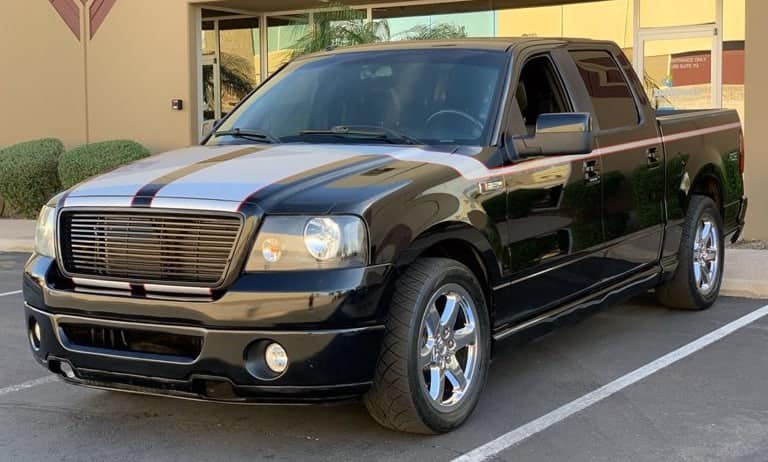
The eleventh generation saw one of the more seismic shifts in the design and construction of the F-Series as it adopted an entirely new platform and a new, more angular exterior styling. Regardless of the body style chosen, every F-150 from this point onwards came equipped with four doors.
Twelfth-generation (2009-2014)
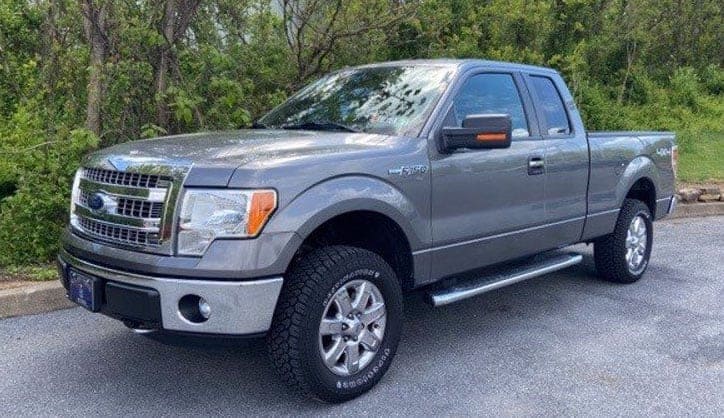
A lot of what is now so synonymous appeared in the F-150’s twelfth-generation, including the EcoBoost turbocharged engines and the off-road and performance-focused SVT Raptor variant. The EcoBoost engines were a major step forward in Ford’s pursuit of ever-improving fuel efficiency for its trucks, but they also did a lot for the truck’s power and performance as anyone with experience of the Raptor will tell you.
Thirteenth-generation (2015-2021)

If the changes introduced for the eleventh generation of the F-150 were seismic then the thirteenth generation was something akin to Krakatoa or Pompeii. This generation got an aggressive, macho, no-nonsense new look with a flat front fascia and a forthright stance, but the really revolutionary development was the extensive use of high-strength, military-grade, aluminum-alloy for the body and high-strength steel for the frame.
This improved the rigidity of the F-150 at the same time as reducing its weight, which helped make this generation of the F-150 lighter, more powerful, more fuel-efficient, and more capable than any version before it.
Fourteenth-generation (2021-onwards)

The all-new fourteenth-generation of the F-150 is a bit of a paradox for me. On the one hand, it’s the first version of the F-150 to embrace electrified powertrain technology, but the exterior design is actually a touch retro and has a slight look of the tenth and eleventh generation models.
How popular is the Ford F-150?
The F-150 is the biggest-selling vehicle of any type whatsoever in the United States and it has been since 1981. Ford has been selling more than 900,000 units of the F-150 for a few years now, and that’s a staggering number for a single model, especially when you compare it to other popular vehicles. For example, the Toyota RAV4 is the biggest-selling SUV in America and the entire world but Toyota sells fewer than half as many RAV4s in America as Ford sells F-150s.
Why is the Ford F-150 so popular?
The Ford F-150 is so incredibly popular because it delivers in every single area that truck buyers care about and it has continued to develop and improved consistently over the years to meet the evolving needs of buyers. The F-150 is strong, capable, reliable and affordable and user-friendly and there’s also an almost limitless number of ways you can configure an F-150 to suit your specific needs. That means buyers can get what’s almost like a custom truck designed to meet their needs exactly, but they get all that at mass-produced prices.
What’s the best used F-150 to buy?
Any version of the Ford F-150 from the 2015 model year onwards can be a good used buy as long as it’s been properly maintained and serviced. The combination of those strong EcoBoost engines and a lightweight, rust-free aluminum body is a winning combination and they can tow up to as much as 13,200 pounds when properly configured.
What year F-150 to avoid?
Avoid the 2004 Ford F-150 if you want a reliable truck that won’t let you down as this one has to go down as one of the worst trucks in history as a result of a terrible engine. The Triton engine of that time was available in the Ford F-150 in 4.6-liter and 5.4-liter versions, and to say they should be avoided is a bit of an understatement.
Apart from that, it’s actually hard to go wrong with buying a used Ford F-150 as long as you’re as careful as you should be when buying any used vehicle.
How much should you pay for a used Ford F-150?
You can almost pay as little or as much as you want for a used Ford F-150, but it doesn’t always follow that the older a used F-150 is the less it costs. Early models from the 70s and 80s are now becoming collectible, especially those in good, unmolested condition.
You can get yourself something like a late 1990s model with a quarter of a million miles for around $1,500 that would still probably do a job, but you’ll struggle to get a late 1980s model in anything resembling decent condition for much less than $10k.
With so many trim levels, powertrains, body styles, trim levels, and configurations to choose from, it’s almost impossible to make generalizations about the pricing of a used F-150. However, here’s a table showing the average minimum and maximum prices for the F-150 from 2008 onwards from the thecarconnection.com website.
| Model Year | Average Minimum Used Price | Average Minimum Used Price |
| 2008 | $4,989 | $27,835 |
| 2009 | $8,500 | $25,998 |
| 2010 | $3,495 | $30,750 |
| 2011 | $7,995 | $35,995 |
| 2012 | $6,500 | $39,000 |
| 2013 | $6,995 | $41,559 |
| 2014 | $7,385 | $47,000 |
| 2015 | $15,900 | $49,788 |
| 2016 | $13,990 | $54,625 |
| 2017 | $14,999 | $64,000 |
| 2018 | $19,700 | $65,000 |
| 2019 | $24,357 | $75,998 |
| 2020 | $25,995 | $85,495 |
Is the Ford F-150 reliable?
The Ford F-150 isn’t the most reliable vehicle you can buy or even the most reliable pickup truck you can buy used either, but it would be unfair to say the F-150 is an unreliable model are there are so many of them around you could easily make a case for it either way.
The rapairpal.com website gives the F-150 a reliability rating of 3.5 out of 5.0 which makes it only the 7th best of 17 full-size trucks considered, and its estimated annual repair cost of $788 is also higher than the average.
But with so many used Ford F-150 pickup trucks out there for sale spanning such a range of ages, mileages, trim levels, specifications and conditions, you could just as easily come across a lemon as you could find yourself with the world’s best used pickup truck.
Does the Ford F-150 hold its value?
A Ford F-150 holds its value remarkably well for a vehicle that’s produced and sold in such huge numbers. If you buy a new base model F-150 today for $28,940 it will only lose around 24% of its value after three years and 45,000 miles. By way of comparison, the equivalent Chevy Silverado 1500 will lose around 28% and a Ram 1500 will lose a massive 33% of its original value over the same period.

What’s considered high mileage on a Ford F150?
On average, the Ford F-150 lasts for between 150,000 and 300,000 miles before the engine needs rebuilding or replacing, but the body, chassis, and other component parts can vary considerably in their durability. You could easily expect 20 years or more of service from an F-150 if it does around 15,000 miles per year, but vehicles used for commercial purposes can easily do many times that amount of driving.
Is the Ford F-150 AWD?
The Ford F-150 is standard rear-wheel-drive in most cases but almost every model has been made available with four-wheel-drive as an option. The AWD systems available for the F-150 over the years vary quite considerably, so it’s a good idea to do some thorough research into the subject if you’re looking to buy a 4X4 F-150 for serious off-roading.
Every AWD version of the Ford F-150 is off-road capable to some extent, but some versions of the Ford pickup are particularly off-road capable such as the mighty Ford F-150 Raptor.
Which Ford F-150 trim level is the best value?
The best value trim level for the F-150 from 2015 onwards is probably the Lariat because it delivers a good middle-ground between performance and luxury at a reasonable price. It has many of the features you’d expect to find in a family sedan or SUV such as a large infotainment touchscreen, EcoBoost engines, and dual-zone climate control, but it’s not so upscale that you’d be afraid to do any work with it.
If all you want and need an F-150 for is for towing and hauling duties you’d probably be better off going for an XLT as it still has more than just the essentials but costs considerably less than a Lariat.

Should you buy a used Ford F-150?
A used Ford F-150 is the obvious solution if you want a reliable, capable, and versatile full-size pickup truck for work, play, family duties, or all three and then some. There are so many to choose from that you can shop around until you find exactly the right one for your need and your budget, and there’s an entire industry geared up for supplying and fitting parts, accessories, and anything else you might want.
